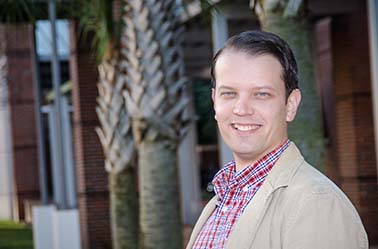Dr. Gregory A. Hudalla, assistant professor and J. Crayton Pruitt Family Term Fellow, and collaborators were recently awarded a $1 million NSF RAISE grant entitled, “RAISE: Design of co-assembling peptides as recombinant protein fusion tags for integrating enzymes into supramolecular hydrogels.”
The NSF Research Advanced by Interdisciplinary Science and Engineering (RAISE) program supports lines of research that promise transformational advances through prospective discoveries that reside at the interfaces of disciplinary boundaries and thus lie outside the scope of a single NSF program. This RAISE project is jointly funded by the Biological and Environmental Interactions of Nanoscale Materials program in CBET Division in the Engineering Directorate, the Molecular Biophysics Program in the Division of Molecular and Cellular Biosciences in the Biological Sciences Directorate, and the Office of Integrative Activities.
The multi-institutional team of Dr. Carol Hall, Camille Dreyfus Distinguished Professor at NC State University, Dr. Anant Paravastu, associate professor at Georgia Tech, and Dr. Hudalla, combine their expertise in computational modeling, biophysical characterization, and nuclear magnetic resonance to study peptide assembly into supramolecular (‘beyond the molecule’) structures. This RAISE award supports their on-going efforts to advance understanding of “peptide co-assembly” — the formation of a single supramolecular structure via interactions between two unique peptide molecules — as well as to use co-assembling peptides attached to proteins as a general strategy to create functional supramolecular biomaterials. The goals of this project are to establish a computational-experimental framework to uncover molecular-level design rules necessary to predict peptide co-assembly, and then to use these rules to develop novel enzyme-functionalized supramolecular biomaterials. This approach is anticipated to provide an extraordinary near-term improvement over the current state-of-the-art in enzyme immobilization methods, while also having a broader transformative impact on designing novel functional biomaterials for medical and technological applications.
